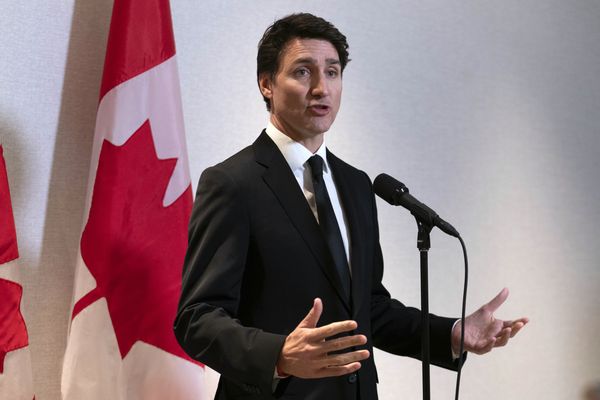
The stakes in this year’s U.S. presidential election are arguably higher than they were in 2016. Yet fears about foreign interference in U.S. elections have only grown in the past four years. Instead of traditional weapons, foreign adversaries are once again turning to social media in their attempts to undermine the upcoming election, and 2020 alone has seen a rash of disinformation about the coronavirus, political unrest, and election integrity. According to a new Gallup/Knight Foundation study, 4 in 5 Americans are concerned that false information will sway the vote in November.
This problem isn’t going unnoticed by the U.S. government. In fact, the current U.S. National Security Strategy (NSS) and National Defense Strategy, which have traditionally focused on conventional military might, highlight the importance of information warfare in international conflicts and in undermining the legitimacy of elections. Despite this, the United States still doesn’t have a clear strategy to combat information warfare.
Meanwhile, authoritarian states are ramping up their use of disinformation amid the COVID-19 pandemic. It’s clear that China and Russia—the two countries that pose the gravest threats to the United States, according to the NSS—are using aggressive information warfare tactics to exploit the pandemic and to erode and undermine the liberal international order. While the United States is slowly responding to the onslaught of propaganda, these efforts fall far short of what is necessary to compete effectively with China and Russia in the long term.
In the past couple of decades, the information environment has become one of the main battlegrounds of great-power competition. That’s because information warfare has the power to shape not only public opinion but also perceptions about how states are competing in key issue areas, such as public health and international development. In effect, major powers are using information warfare to sow domestic discord and distrust on their adversaries’ soil, rendering governments unable to focus on external threats.
Disinformation, of course, is a critical component of this, but it’s far from the only threat. Beijing and Moscow are actively experimenting with both defensive and offensive information campaigns as tools of both domestic control and, increasingly, foreign policy. Defensive information warfare includes disinformation campaigns meant to discredit dissidents and the use of public data to, for instance, track and arrest journalists. Offensive campaigns, on the other hand, undermine and disrupt other countries by using digital media platforms and artificial amplification through automated or fake accounts such as bots, trolls, and sock puppets, as well as syndicated media distribution.
While these campaigns are most often associated with Russia, the Chinese government has also been rapidly weaponizing public information and the cybersphere—especially during the pandemic. Beijing has aggressively amplified false narratives about the origin of the coronavirus.
Zhao Lijian, a spokesperson for the Chinese Ministry of Foreign Affairs, has falsely claimed multiple times that the U.S. Army visited Wuhan in 2019 to spread the virus, and the Chinese Communist Party (CCP) has also pushed disinformation that blames the United States for the outbreak. In addition, it has actively promoted a perception of China as a responsible global leader through artificial amplification despite, for example, sending defective COVID-19 testing kits and masks to the Netherlands, Spain, and Turkey.
Meanwhile, Moscow has used coronavirus disinformation to amplify anti-European Union sentiment and movements throughout Western Europe. This is consistent with Russia’s interference in the 2016 U.S. presidential election and highlights its efforts to undermine the EU and the United States concurrently.
The problems are far-reaching, and despite increased attention to them in the United States, the current policy debate around these information campaigns lacks clear—and necessary—long-term objectives. In order to address the threats from both China and Russia, the United States needs to do three things.
First, the U.S. government should treat disinformation as it would any major threat to national security. Disinformation mitigation in the form of deleting suspicious inorganic accounts and posts will never be agile enough to keep online agitators and unwitting disseminators at bay: The Kremlin and the CCP can manufacture or contract out more accounts and trolls faster than other governments or companies can remove them.
Along these lines, the U.S. government and civil society organizations should step back and target the entire ecosystem of disinformation propagation—including where it comes from, how it’s disseminated, and what effects it has.
They should focus especially on the automated mechanisms, such as bots and trolls, that amplify foreign regime-affiliated accounts and disinformation, as well as popular infiltration avenues, such as syndicated media outlets linked to regime-affiliated accounts or websites. (Washington has designated Chinese state-aligned media outlets, such as Xinhua, CGTN, China Radio, and the People’s Daily, as foreign agents of the CCP.) Technological solutions, such as automation detection, will be key to identifying and targeting mass groups of accounts and content across digital media platforms.
Second, U.S. security stakeholders should expect disinformation from abroad to be a permanent feature of political and economic life throughout the pandemic. Now that national security analysts are finally acknowledging this, the United States should provide much more than just labeling and reactive fact-checking, which is what social media companies have started to do.
It should quickly develop and implement a widely available public portal that allows individuals and organizations to easily ascertain two things: where content originated (and whether it’s from a reputable media outlet or from a known propaganda or conspiracy site) and how content has reached a media platform or outlet. These are crucial pieces of information, since a typical disinformation campaign begins at an unreliable source, such as the Russian state-owned news outlet Sputnik; becomes amplified in regime-owned social media; infiltrates Western social media platforms; and then occasionally gets picked up by larger U.S. media outlets.
Third, both the public sector and business leaders should embrace and promote public and private partnerships. Some of the best solutions to technological problems come from Silicon Valley. It’s true that the U.S. government has set up several such programs, including the Defense Innovation Unit and National Security Innovation Network, under the Defense Innovation Board, to accelerate the use of emerging technologies that use artificial intelligence and data analytics. Yet these initiatives are still hamstrung by complex bureaucracy and protracted contracting processes that aim to acquire commercially available algorithmic solutions—an organizational issue widely shared across democracies.
Ultimately, the United States needs to adopt a more holistic approach to the technostrategic race that defines the current nature of great-power competition with China and Russia. Each government agency that’s responsible for information operations should organize and sustain an advisory council of think tanks and academic and private sector stakeholders.
The country has done it before, with, for example, the U.S. Cyberspace Solarium Commission and the National Security Commission on Artificial Intelligence. However, both commissions remain too narrowly focused to combat information warfare, which is famously hard to pin down. Even the Defense Department has acknowledged the need for integrated information warfare that transcends the traditional divides between, among other things, cyberwarfare, psychological operations, and military deception.
Addressing the problem fully will be difficult, given the extent of political polarization in the United States—some of which was fomented by Russia itself—but it’s not impossible. One promising idea came from Michael Lumpkin and Mark Mitchell, both former assistant secretaries of defense for special operations/low-intensity conflict, when they recently advocated for establishing a secretary of influence operations at the Pentagon.
But the United States would need to go even further. One clear way of implementing the necessary steps would be to create a bipartisan, private-public commission on information warfare that cuts across current bureaucratic—and political—divides. This council of experts should then convene regularly to discuss strategic challenges in the information environment and find real solutions to them. This is not a novel concept. Other major powers have similar institutions—for instance, China’s Central Military Commission runs a Science and Technology Commission. The United States just has to follow suit.
The COVID-19 pandemic has brought long-overdue attention to the use of disinformation by authoritarian regimes, but naming the problem is not enough. China and Russia have weaponized the information environment for too long, and democratic countries need to find ways to preserve the principles of an open society and organic online discourse. In the face of information warfare, the United States in particular has the dual advantages of technological innovation and an unparalleled national security apparatus. It’s time to use them.







